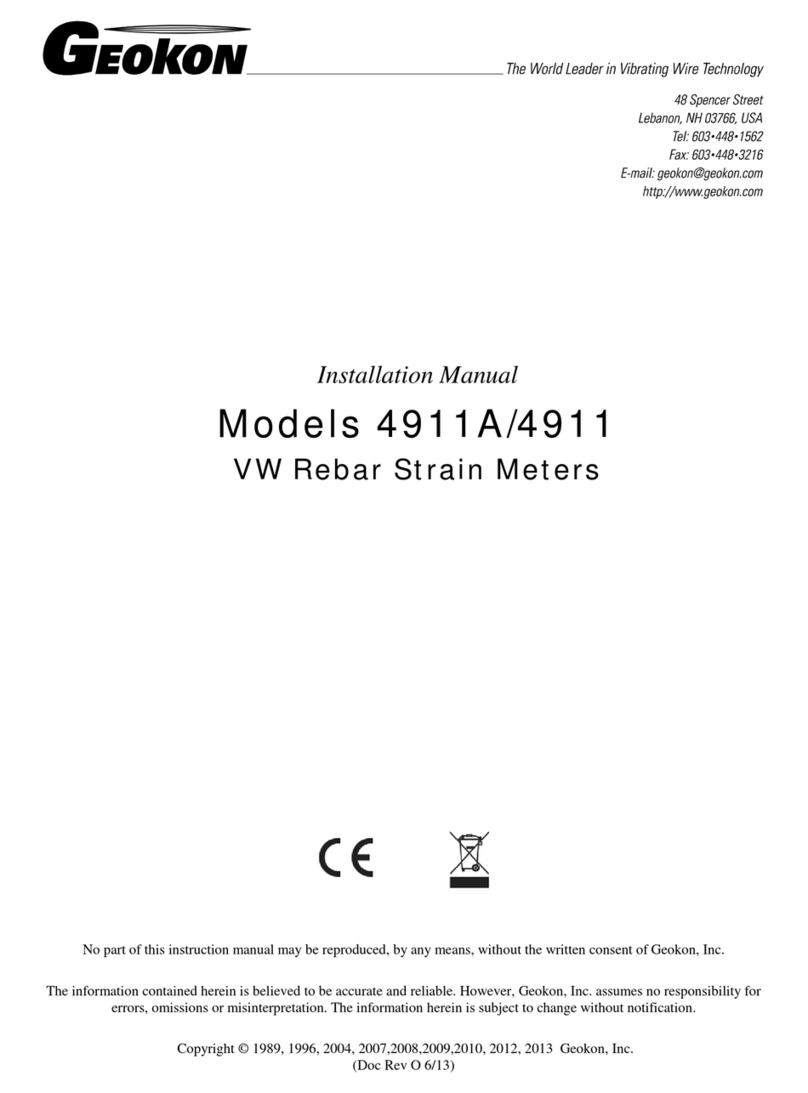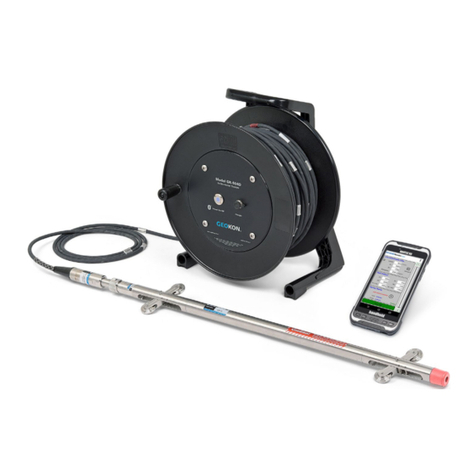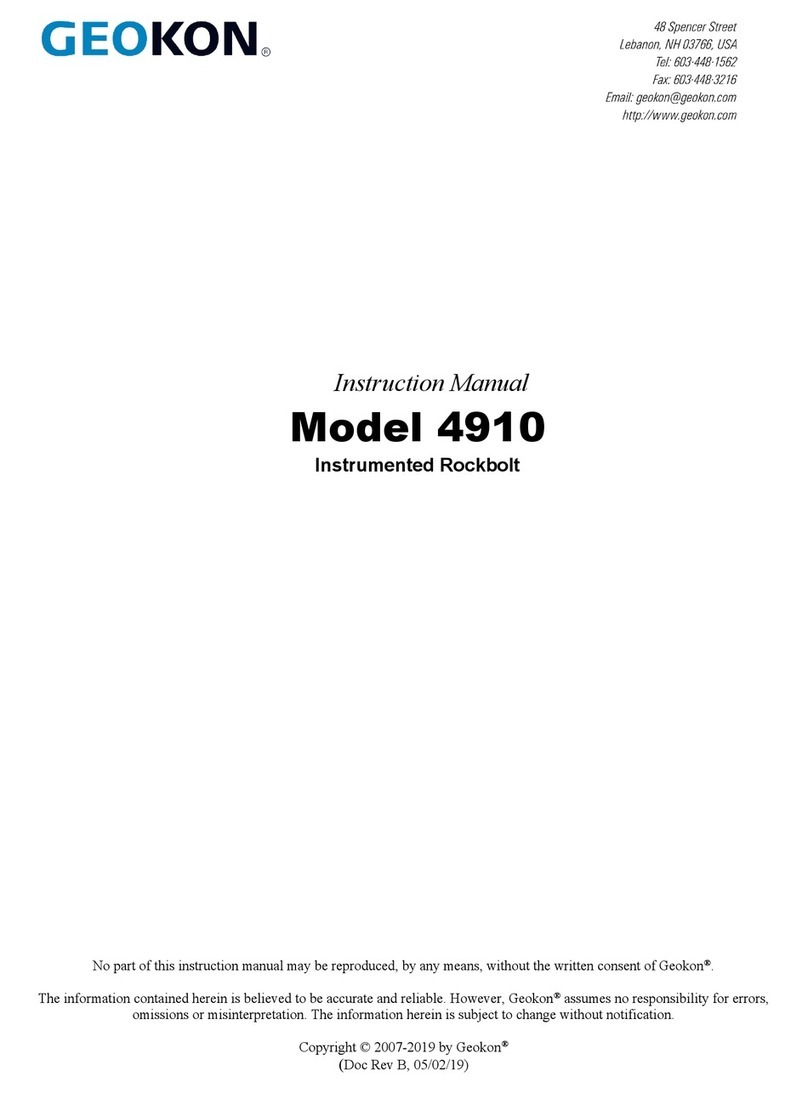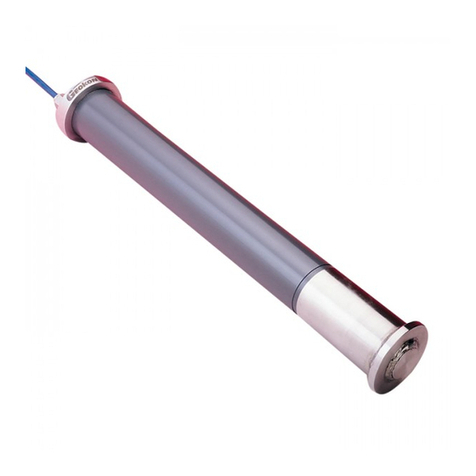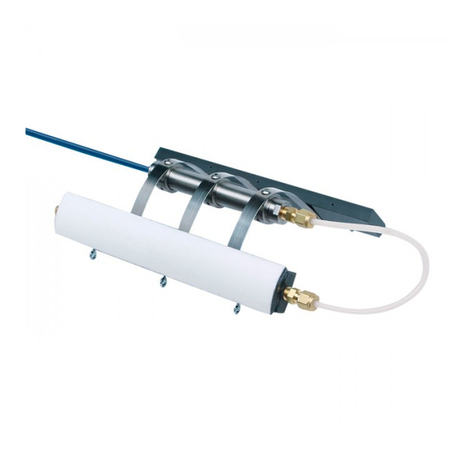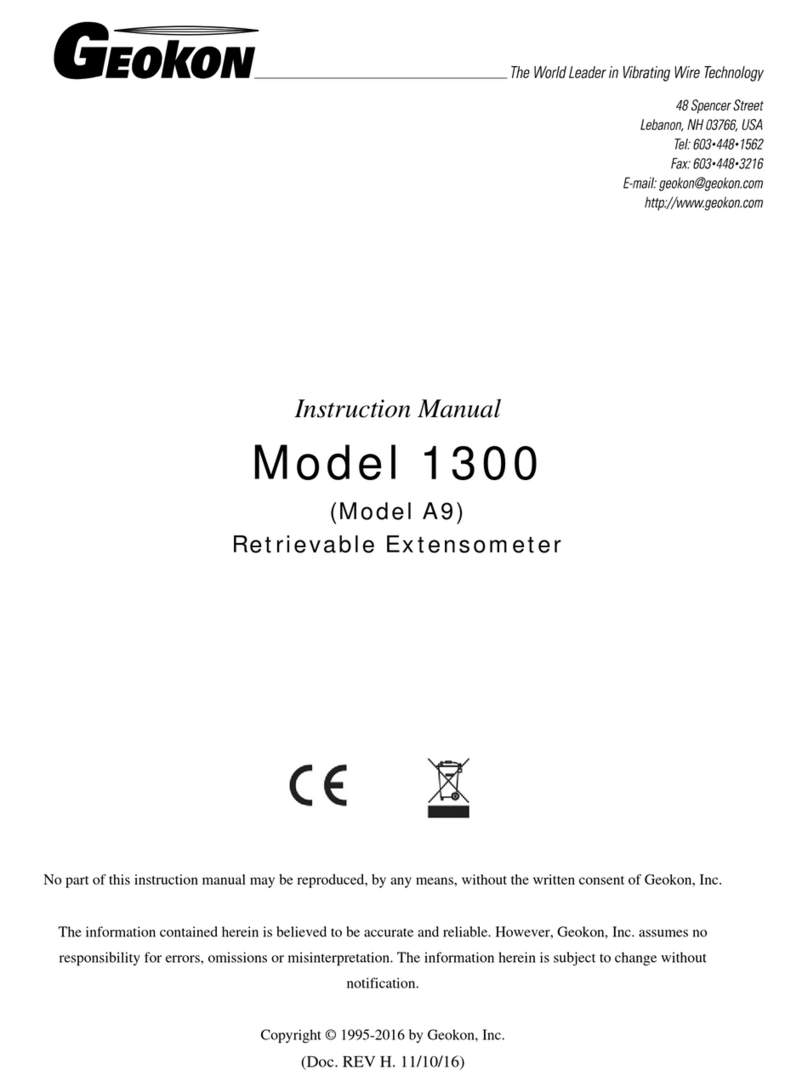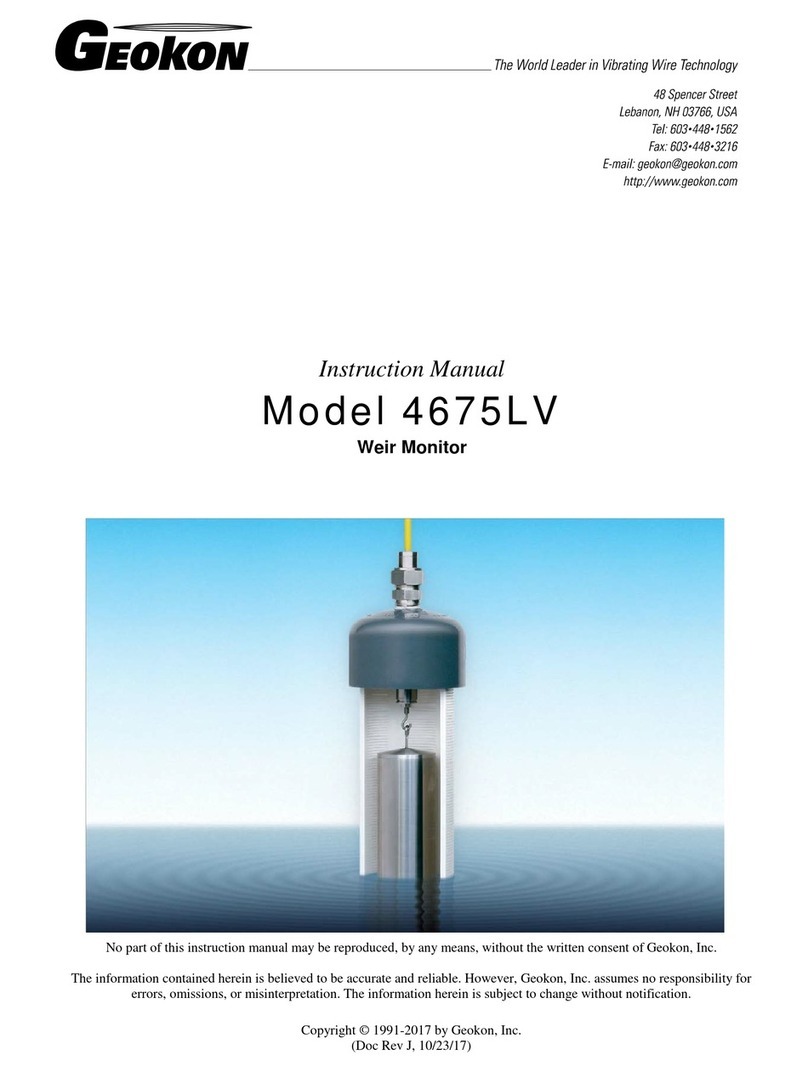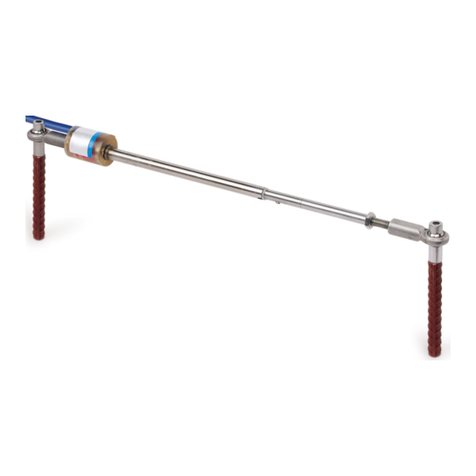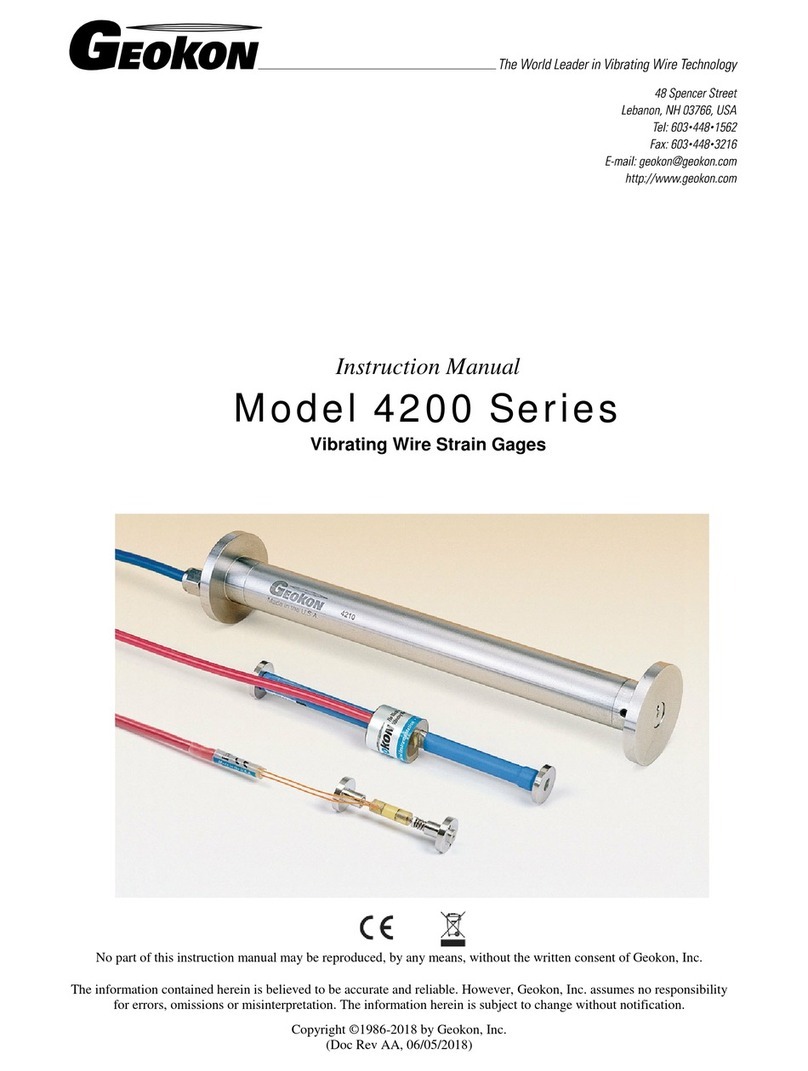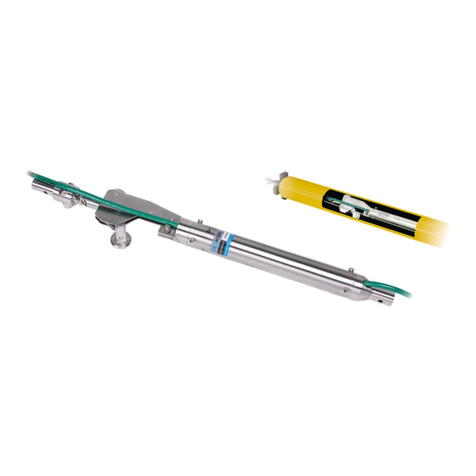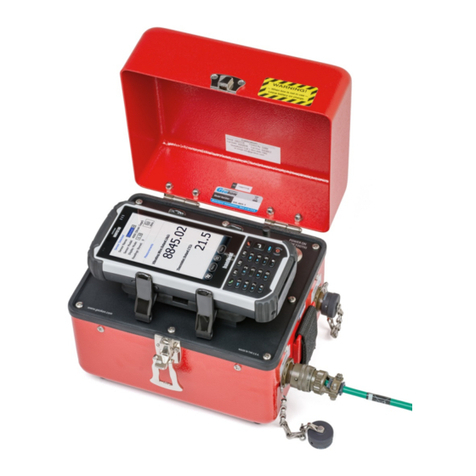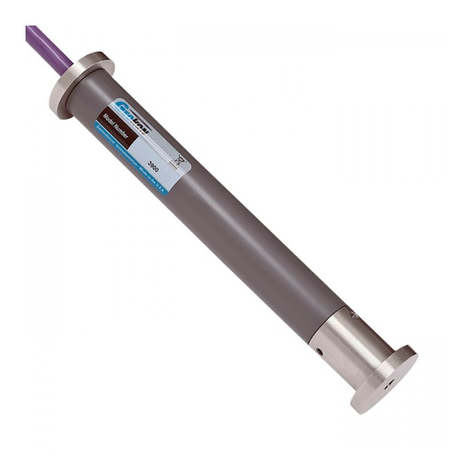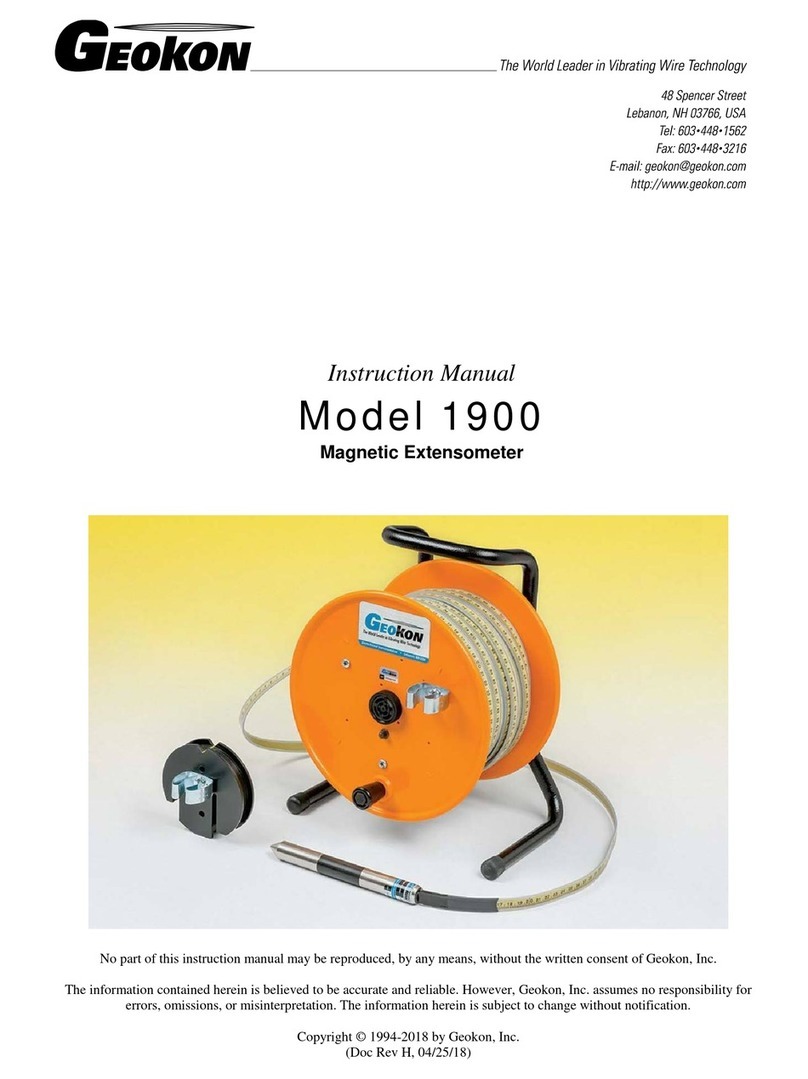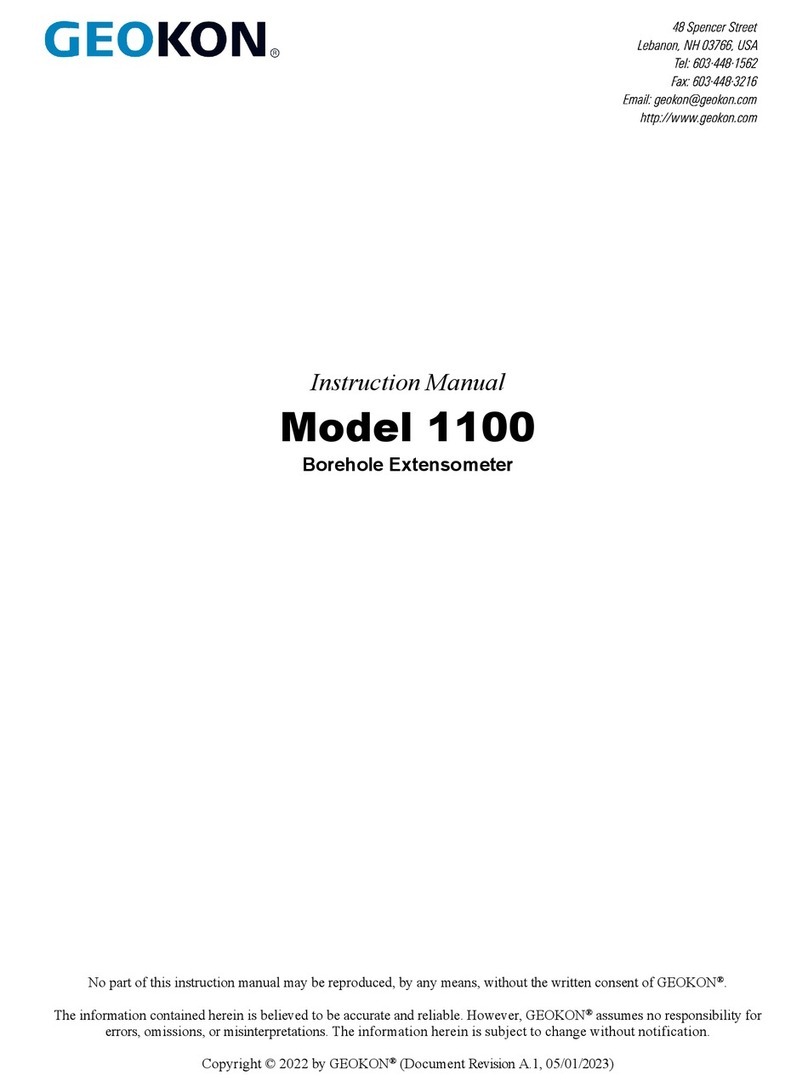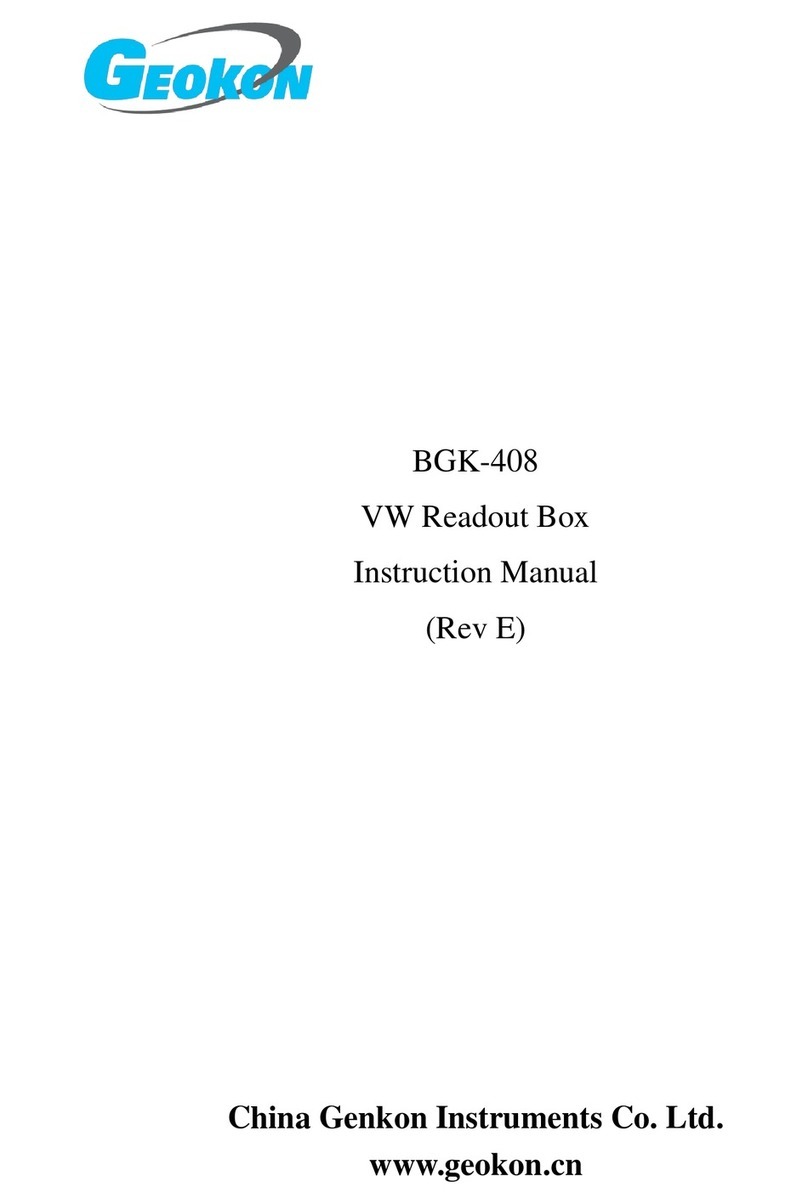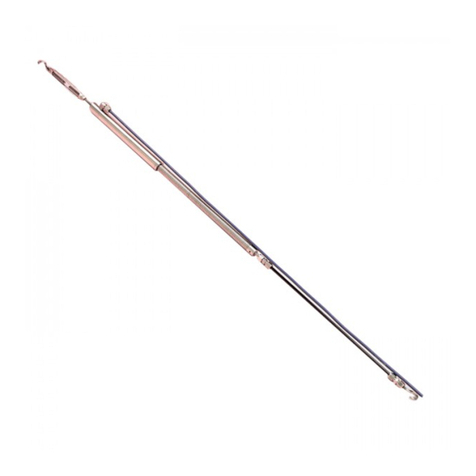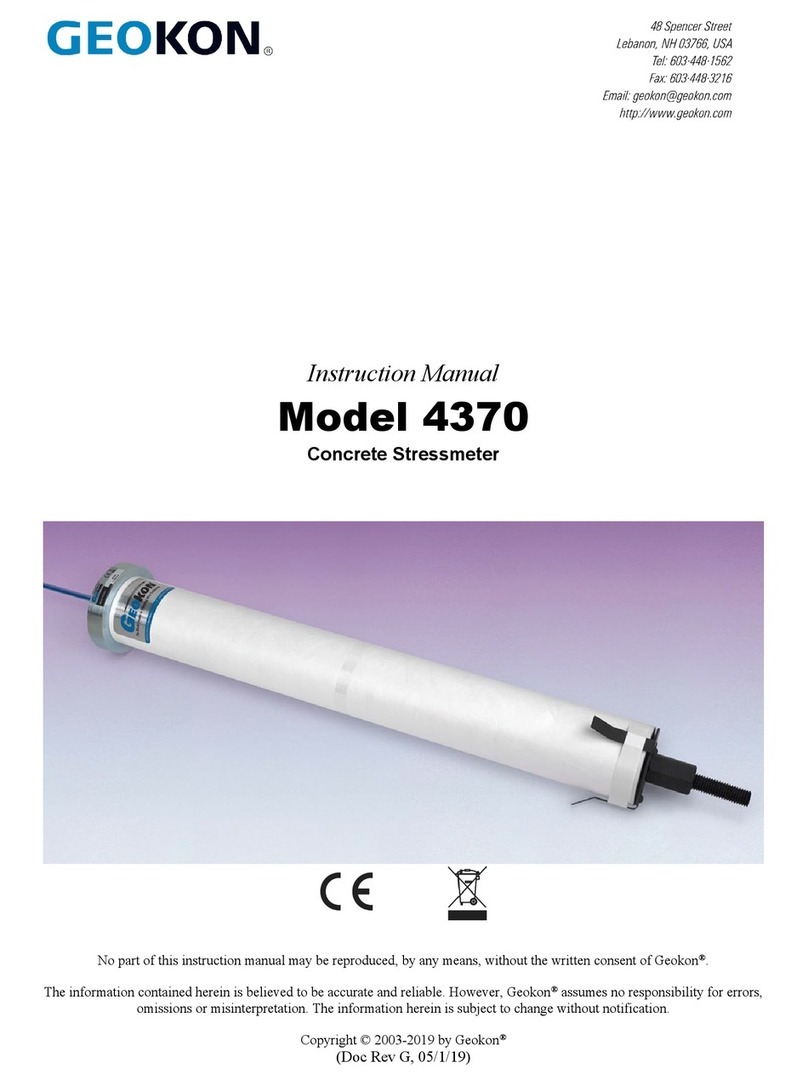
2
2. Introduction_____________________________________________________
The Geokon Model 6101 MEMS Portable Tiltmeter is a precise, portable instrument designed to make rapid
determinations of tilt in the monitoring of structures and soil and rock masses.
It has applications in landslide monitoring, subsidence adjacent to excavations, tilting in buildings, retaining
walls, bridge abutments, dams, etc.
2.1 Description _________________________________________________________________________
The MEMS tiltmeter system usually consists of three main components. They are the tiltmeter, the readout system
and the tilt plate.
Tilt plates are designed to be permanently attached to the structure, either by epoxy bonding (ceramic plates)
or bolting (stainless steel plates).
The sensing element of the tiltmeter is a high accuracy MEMS sensor sealed in a waterproof housing.
The sensor is aligned on the tiltplate for measurements with alignment bars so that the same position and
orientation is guaranteed for every reading.
The output of the Geokon Model 6101 MEMS tiltmeter is equal to +/- 4 volts at +/- 15°. When used with a GK-
603, or GK-604 readout box, set to a gage factor of approx 0.62 (the exact gage factor is shown on the calibration
sheet), the display will be 20,000 sin such that at +/- 15 ° the readout box will display ± 5176 (make sure that in
the “Configure Probe” screen the units are set to 2.0 sin and not 2.5 sin ). (2.5 sinis reserved for Sinco type
sensors with an output of 25,000sin), and the Gage Factor is set to the figure shown on the calibration sheet
supplied with the tiltmeter.
The polarity of the tiltmeter is set such that if tilted downward in the positive (+) direction the output will increase
positively. See Figure 1and Figure 2.
3. Installation______________________________________________________
Portable tiltmeters must be manually read so the location of the tiltmeter plate must be both protected and
accessible. Covers are available for installations in areas where heavy construction is ongoing or where vandalism
may be a problem.
The tiltplates should be installed on firm, clean surfaces as close to flat as is possible. Most installations utilize
epoxy as the body-bonding medium. A resin such as Devcon VW 11800 can be used. The epoxy should be
allowed to fully cure before readings commence.
For vertical installations such as building walls, bridge abutments, etc., the tilt plate pegs must be aligned as close
to vertical as possible with Peg #1 at the top.
